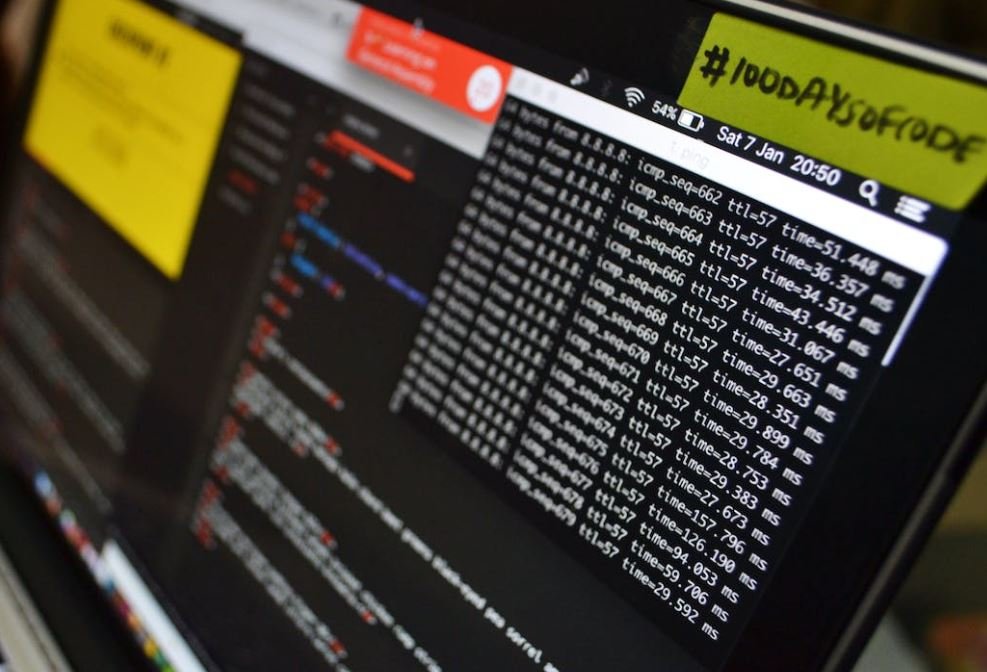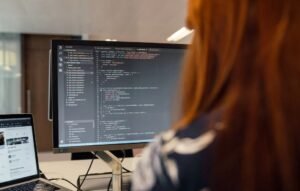Are AI Taking Jobs?
In today’s rapidly evolving technological landscape, the rise of Artificial Intelligence (AI) has sparked debates regarding its impact on employment. As AI continues to advance and automate various tasks, many individuals have growing concerns about the potential consequences for the workforce. This article aims to explore the question: Are AI taking jobs?
Key Takeaways:
- AI has the potential to automate routine and repetitive tasks, leading to job displacement in certain sectors.
- However, AI also creates new job opportunities in fields that require advanced technological skills.
- Efforts should be made to reskill and upskill the workforce to adapt to the changing job market.
**Artificial Intelligence (AI)**, a branch of computer science, focuses on developing smart machines capable of performing tasks that usually require human intelligence. *With advancements in AI, industries across various sectors are experiencing significant changes.* For instance, in manufacturing, AI-powered robots are increasingly taking on assembly line work, reducing the need for human labor. AI is also revolutionizing industries like healthcare, finance, and transportation, where complex data analysis and decision-making processes are involved.
| Industry | Percentage of Jobs at Risk |
|---|---|
| Transportation | 68% |
| Manufacturing | 47% |
| Retail | 44% |
In recent years, there has been a growing concern that **AI may lead to higher rates of unemployment**. While it is true that certain jobs may be displaced by AI, it is important to recognize that new job opportunities are also emerging. *Tasks that are predictable, repetitive, and easily automated are most susceptible to being replaced by AI, whereas jobs requiring creativity, critical thinking, and interpersonal skills are less likely to be affected.* In fact, AI implementation often creates a demand for technically skilled professionals who can develop, manage, and maintain AI systems.
1. **Blue-collar jobs** that involve physical labor, such as assembly line work, are at a higher risk of being automated due to AI advancements. For instance, in the transportation industry, self-driving vehicles are becoming more common, potentially eliminating the need for truck drivers.
2. **Administrative roles** that involve data entry, document processing, and routine scheduling can be replaced by AI-powered software solutions, freeing up time for employees to focus on more complex tasks that require human cognitive abilities.
| Country | Percentage of Workers at Risk |
|---|---|
| United States | 38% |
| Germany | 35% |
| Japan | 21% |
While it is undeniable that AI adoption will have an impact on the job market, **reskilling and upskilling** the workforce can help mitigate some of the negative effects. Companies and educational institutions have a crucial role in providing training programs to equip individuals with the necessary skills to work alongside AI systems. *By focusing on areas where human expertise is essential, such as problem-solving, creativity, and emotional intelligence, individuals can remain valuable contributors in the evolving workforce.*
To summarize, the rise of AI raises questions about the future of employment. While certain jobs may be at risk, AI also creates new opportunities and demands a workforce with advanced technological skills. *Rather than fearing the potential job displacement, individuals and institutions should embrace the changing landscape and prepare for a future where humans and AI collaborate, enhancing productivity and innovation.*

Common Misconceptions
Misconception 1: AI will take away all jobs
One common misconception about artificial intelligence (AI) is that it will completely replace human workers and take away all jobs. However, this is not entirely true. While AI has the potential to automate certain tasks and jobs, it is also creating new opportunities and transforming the workforce in various industries.
- AI technologies are more likely to complement human skills rather than replace them entirely.
- Many jobs will require hybrid skills, combining human capabilities with AI technology.
- AI will create new job roles that involve managing, maintaining, and improving AI systems.
Misconception 2: AI will only affect low-skilled jobs
Another misconception is that AI will primarily impact low-skilled jobs, leaving high-skilled positions unaffected. However, AI technologies have the potential to influence jobs across the skill spectrum. While it is true that certain repetitive or routine tasks may be automated by AI, high-skilled jobs will also experience changes.
- AI can assist professionals in data analysis, research, and decision-making processes.
- High-skilled jobs may require individuals to work alongside AI systems and utilize AI-powered tools.
- AI can enhance productivity and efficiency in various industries, impacting jobs at different skill levels.
Misconception 3: AI will replace creativity and complex cognitive tasks
Many misconceptions stem from the belief that AI is solely focused on replacing humans in repetitive or manual tasks. While AI is indeed proficient at automating certain tasks, it is also capable of handling complex cognitive tasks and augmenting human creativity.
- AI can assist in creative processes, such as generating ideas, designing, and composing music.
- AI algorithms can analyze vast amounts of data to extract valuable insights and support decision-making.
- AI technologies are continually evolving and advancing, enabling them to perform complex cognitive tasks with increasing accuracy.
Misconception 4: AI will lead to mass unemployment
There is a widespread fear that AI will lead to mass unemployment, leaving millions of people without jobs. However, historical evidence suggests that technological advancements, including the rise of AI, do not necessarily result in long-term unemployment.
- While certain job roles may be automated, new job opportunities may emerge in different areas.
- Workers may need to adapt and acquire new skills to remain relevant in the changing job landscape.
- AI can create new industries and businesses, generating additional employment opportunities.
Misconception 5: AI operates completely independently without human involvement
One misconception is that AI operates autonomously without human involvement. The reality is that AI systems require human input, supervision, and maintenance to function effectively.
- Human oversight is essential to ensure AI systems are aligned with ethical guidelines and prevent biases.
- Data preprocessing and fine-tuning of AI algorithms often require human expertise.
- AI systems require regular monitoring, maintenance, and updates by human professionals.

Automation in the Manufacturing Industry
The table below shows the percentage of jobs at risk of automation in the manufacturing industry. With advancements in artificial intelligence (AI) and robotics, there is a growing concern about the potential loss of jobs to automation.
| Job Role | Percentage of Jobs at Risk of Automation |
|——————-|—————————————-|
| Assembly Line Worker | 75% |
| Welder | 60% |
| Machine Operator | 40% |
| Quality Inspector | 15% |
| Maintenance Technician | 10% |
AI in the Healthcare Industry
The following table provides an overview of how AI is revolutionizing the healthcare industry. From enhancing diagnostic accuracy to streamlining administrative tasks, AI has the potential to improve patient outcomes and optimize healthcare delivery.
| Application | Benefits of AI in Healthcare |
|———————–|—————————————————-|
| Medical Imaging | Increased accuracy in diagnosing diseases |
| Electronic Health Records | Efficient management of patient data |
| Virtual Assistants | Enhanced patient engagement and support |
| Drug Discovery | Accelerated development of new treatments |
| Predictive Analytics | Early identification of potential health risks |
AI in Customer Service
The table below illustrates how AI is transforming the customer service landscape. With AI-powered chatbots and voice assistants, businesses can provide instant support and personalized experiences to their customers.
| Industry | AI Applications in Customer Service |
|—————–|———————————————————–|
| Retail | Virtual shopping assistants for personalized recommendations |
| Banking | Chatbots for 24/7 customer support and account inquiries |
| Travel | Voice assistants for booking flights and hotels |
| E-commerce | AI-powered chat support to address customer queries |
| Telecom | Virtual agents for troubleshooting and technical support |
AI and Data Security
In an increasingly digital world, data security is crucial. AI technologies can help mitigate cyber threats and bolster defenses against malicious activities. The table below outlines different AI applications in data security.
| Application | AI in Data Security |
|——————–|—————————————————————|
| Intrusion Detection | AI algorithms analyze network patterns to detect anomalies |
| User Authentication | Facial recognition and voice biometrics for secure access |
| Malware Detection | AI models identify and block suspicious software and files |
| Security Monitoring | Real-time monitoring of systems and immediate threat response |
| Data Encryption | AI-based encryption methods for safeguarding sensitive data |
AI in Education
The integration of AI in education has immense potential to revolutionize traditional teaching approaches. From personalized learning to intelligent tutoring systems, AI can enhance student engagement and educational outcomes.
| AI Application | Benefits in Education |
|————————-|————————————————————-|
| Adaptive Learning | Tailored learning experiences for individual students |
| Intelligent Tutoring | Personalized feedback and guidance for academic progress |
| Virtual Reality | Immersive and interactive educational simulations |
| Automated Grading | Efficient evaluation of assignments and exams |
| Language Translation | Language barriers overcome to facilitate international education |
AI in Agriculture
As the global population continues to grow, AI is being harnessed to optimize agricultural practices and ensure food security. The table below highlights AI applications in the agricultural sector.
| Application | AI Advancements in Agriculture |
|———————-|———————————————————————|
| Crop Monitoring | Drones and AI-powered sensors for early pest detection and yield estimation |
| Precision Farming | AI algorithms optimize water and fertilizer usage for sustainable farming |
| Livestock Management | Real-time monitoring of animal health and behavior using AI technology |
| Disease Detection | AI models identify plant diseases and suggest appropriate remedies |
| Harvesting | Robotic systems equipped with AI for efficient and precise crop harvesting |
AI and Financial Services
The financial services industry is undergoing a significant transformation due to the integration of AI technologies. This table provides insights into how AI is reshaping finance.
| Function | AI Impact on Financial Services |
|————————|————————————————————–|
| Fraud Detection | AI algorithms detect and prevent fraudulent transactions |
| Algorithmic Trading | AI-based trading systems for improved market analysis |
| Customer Analysis | AI analytics provide personalized financial guidance |
| Risk Assessment | AI models assess creditworthiness and determine loan risks |
| Robo-Advisors | AI-powered investment platforms offering automated advice |
AI and Autonomous Vehicles
The development of autonomous vehicles is heavily reliant on AI. This table highlights the different AI applications in the field of autonomous transportation.
| Function | AI Applications in Autonomous Vehicles |
|————————|———————————————————————–|
| Object Detection | AI-powered sensors identify and track objects in the vehicle’s path |
| Adaptive Cruise Control| AI systems adjust vehicle speed based on surrounding traffic conditions |
| Lane Departure Warning | AI algorithms alert the driver when the vehicle deviates from its lane |
| Traffic Prediction | AI models analyze traffic patterns to determine optimal routes |
| Collision Avoidance | Autonomous emergency braking systems powered by AI to prevent crashes |
AI and Retail Industry
In the retail industry, AI is transforming the way businesses operate. From personalized recommendations to inventory management, AI is streamlining retail processes.
| Function | AI Applications in Retail |
|————————|———————————————————————|
| Demand Forecasting | AI models use historical data to predict future demand |
| Virtual Stylists | AI-powered systems offer personalized fashion and styling advice |
| Inventory Management | AI algorithms optimize stock levels and automate replenishment |
| Visual Search | AI technology enables customers to search for products using images |
| Price Optimization | AI-based pricing strategies maximize profitability and sales |
Conclusion
As AI continues to advance, fears of job displacement persist. However, it is crucial to recognize that AI also brings numerous benefits and opportunities across various industries. The tables presented in this article highlight the transformative potential of AI in manufacturing, healthcare, customer service, data security, education, agriculture, financial services, autonomous vehicles, and retail. While some job roles may become automated, AI has the power to enhance productivity, efficiency, and overall human experience. Embracing responsible AI adoption is key to reaping the full benefits of this technological revolution.
Are AI Taking Jobs?
FAQs
What is AI and how does it work?
AI, or artificial intelligence, refers to the development of computer systems that can perform tasks that normally require human intelligence. This includes things like speech recognition, problem-solving, decision-making, and learning. AI systems use algorithms to process vast amounts of data and make predictions or take actions based on that data.
Are AI technologies taking over human jobs?
AI technologies have the potential to automate certain tasks and jobs that were traditionally performed by humans. However, they can also create new job opportunities by augmenting human capabilities and introducing new ways of working. The impact of AI on jobs depends on various factors such as the specific industry and the level of complexity of the tasks involved.
Which industries are most likely to be affected by AI taking jobs?
AI is likely to impact a wide range of industries, but some sectors are more susceptible to automation than others. Jobs that involve routine, repetitive tasks or data-driven decision-making are more prone to be affected by AI. Industries such as manufacturing, transportation, customer service, and finance may see significant changes due to the rise of AI technologies.
Will AI completely replace human workers?
While AI can automate certain tasks and roles, it is unlikely to completely replace human workers in most industries. AI technology is best suited for augmenting human capabilities and assisting in complex decision-making rather than completely taking over jobs. The focus should be on finding ways to collaborate with AI systems to enhance productivity and efficiency in the workplace.
What are the potential benefits of AI technologies in the workforce?
AI technologies have the potential to improve productivity, efficiency, and accuracy in various industries. They can automate repetitive tasks, provide real-time data analysis for informed decision-making, enhance customer experiences, and enable the development of new products and services. Additionally, AI can assist in hazardous or physically demanding jobs, reducing the risk to human workers.
Are there any risks associated with AI taking jobs?
While AI offers many benefits, there are also risks involved. One potential concern is the displacement of workers who rely on jobs that can be easily automated. This could lead to unemployment and socioeconomic instability. Privacy concerns, biased AI systems, and ethical considerations regarding the impact on human wellbeing are also important areas of discussion when it comes to AI technologies in the workforce.
How can individuals prepare for the impact of AI on jobs?
Individuals can prepare for the impact of AI on jobs by acquiring skills that are difficult to automate. Skills such as critical thinking, creativity, problem-solving, complex reasoning, and emotional intelligence are likely to remain valuable in a world with increasing AI integration. Continuous learning and upskilling are crucial to staying relevant in a job market influenced by AI technologies.
What role do policymakers play in mitigating the impact of AI taking jobs?
Policymakers have a crucial role in shaping the impact of AI on jobs and society. They can implement regulations that promote responsible AI development, ensure transparency and accountability in decision-making algorithms, and establish programs to support workers affected by automation. Collaboration between policymakers, industry leaders, and tech experts is essential to navigate the challenges and opportunities presented by AI in the workforce.
How can businesses adapt to the changing landscape of AI and jobs?
Businesses can adapt to the changing landscape of AI and jobs by embracing AI as a tool for productivity and innovation, rather than a threat. This involves exploring the potential applications of AI in their respective industries, investing in reskilling and upskilling programs for employees, fostering a culture of continuous learning and collaboration, and actively engaging in discussions on ethical AI use and responsible automation.
What are some real-world examples of AI technologies affecting jobs?
There are numerous real-world examples of AI technologies affecting jobs. For instance, in the transportation industry, self-driving vehicles have the potential to disrupt the job market for taxi drivers and truck drivers. In manufacturing, robotic automation can replace certain assembly line tasks previously performed by human workers. Chatbots and virtual assistants are also being used to automate customer service interactions in many industries.




